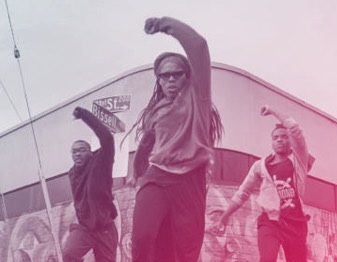The subject gets all the play. In a sentence, the subject performs, affects the object, “the subject of a clause controls the verb and typically precedes it,” says Chicago. When a sentence starts with anything but a subject, people get their knickers in a twist (“Avoid the passive voice at all costs,” they say). Our grammar instructs us to be actors, not acted upon, subjects not subjected to.
But two current East Bay art shows think differently. They walk away from subject-hood, venturing into less-sure territory. Just Because There Are Questions Doesn’t Mean There Are Answers at Blankspace Gallery and Becoming Non Object at Hatch Gallery both seek liberation and possibility through the processes of un-definition and inversion. The works and the methods are diverse, but the goal is the same: discovery through a shift in perspective.
Just Because There Are Questions… is a series of collaborations between Sam Lopes, Joy Fritz, Matthew Momchilov, and Erik Scollon. All the works were made through a game of copycat, in which the artists imitated one of their collaborators’ styles. While the “art machine” encourages artists to develop a unique brand, these guys bravely try on artistic styles like different dresses at a thrift store. The result is an irreverent series of works that questions ideas of authenticity, imitation, and the integrity of identity, artistic as well as sexual.
A queer theme runs through it all, explicitly referenced in the show’s literature and implied by many of the works. A sense of psychedelic domesticity is rampant. Hearthstones and shag-carpeted living rooms pulsate with bright colors and sexual innuendoes. In “Distracted by Joy in a Bathing Suit,” by Sam Lopes and Joy Fritz, a life-sized paper-mache nude figure reclines beneath a crocheted afghan before a cardboard fireplace. A male body in a woman’s bathing suit stands suggestively nearby. It’s like we’ve walked in on something.
A wooden sculpture, entirely abstract and geometric, dominates one wall. “Quantum Leap,” by Lopes, is a checkerboard of colors that intersect and depart, come together to make new shapes and take off to create other ones. How many different combinations are possible? How do the edges of one shape bleed into another? When does the merging stop? It seems like a metaphor for identity, one that informs the entire show.


